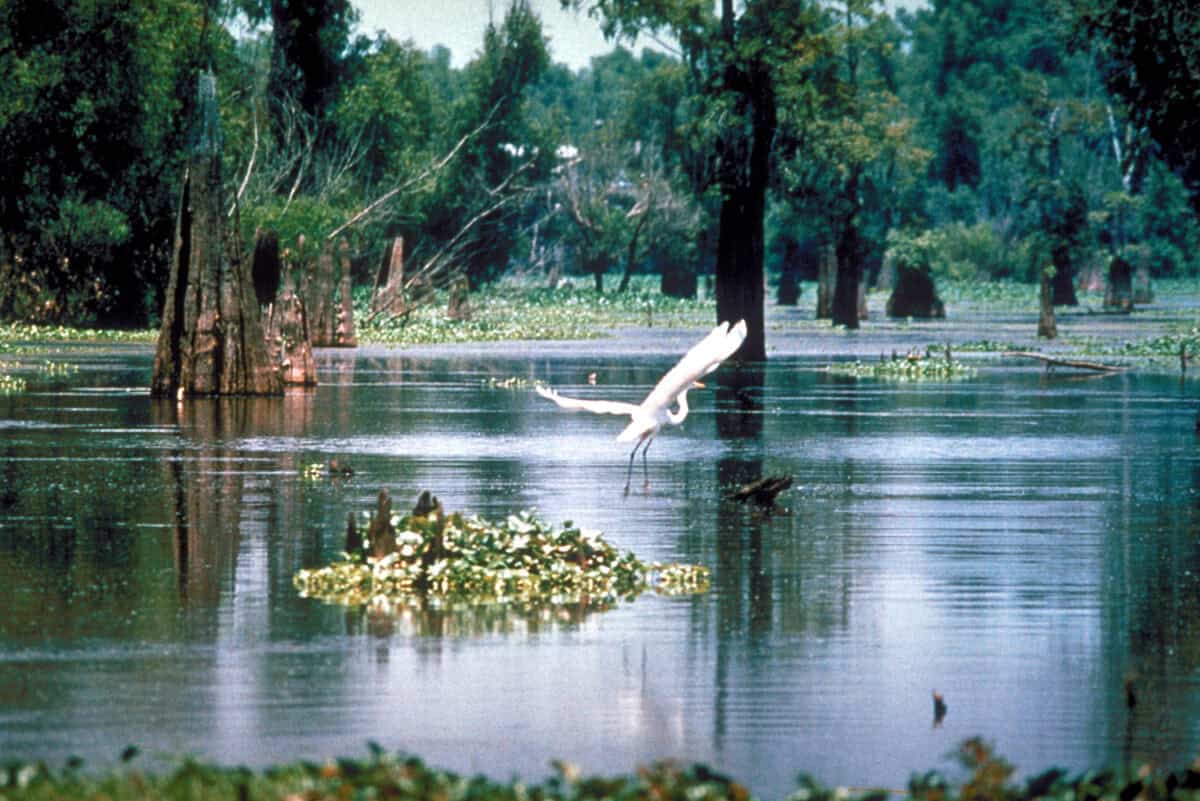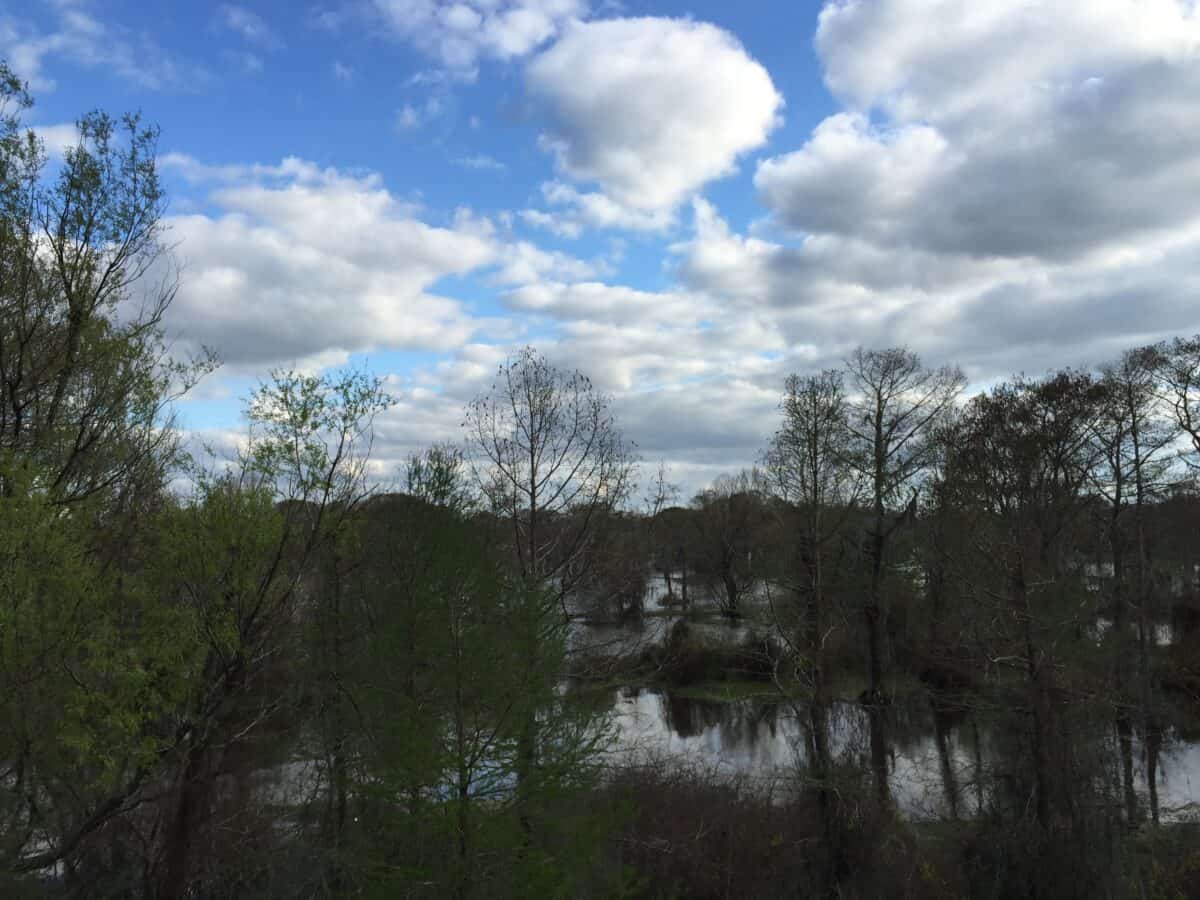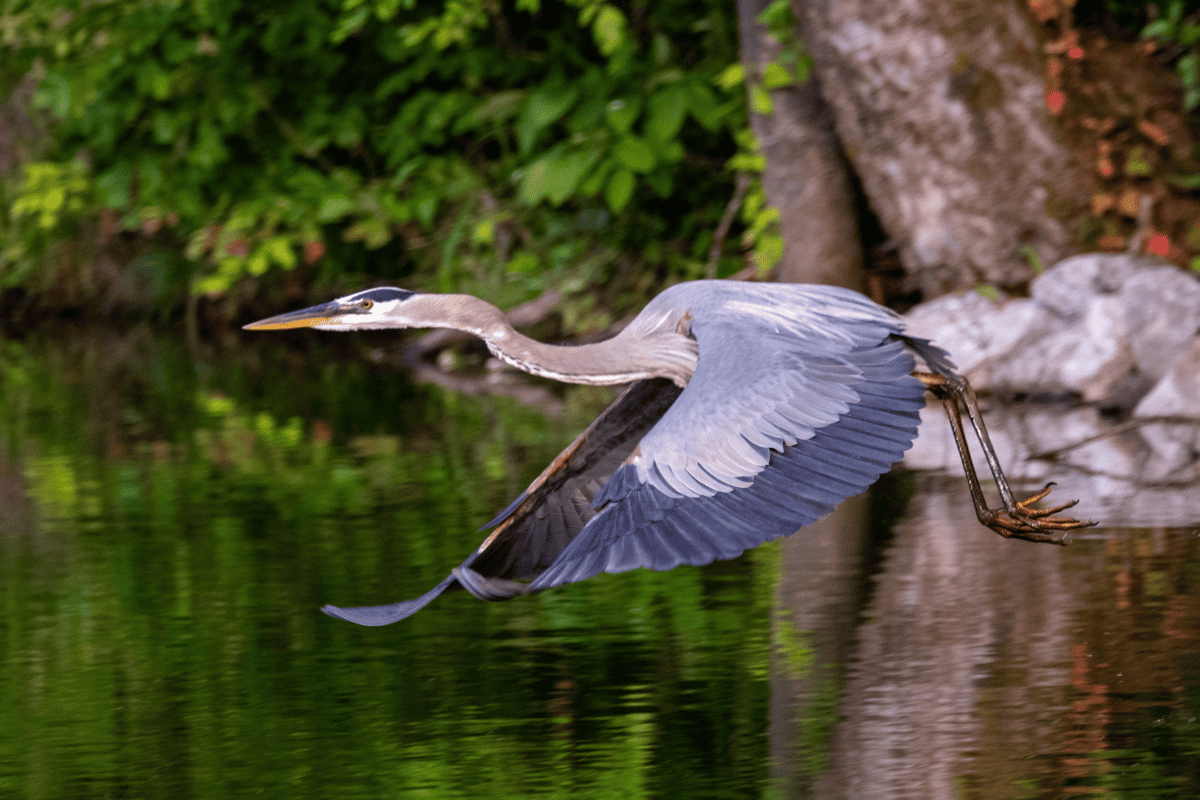Venturing into the heart of the United States’ wild landscapes, we uncover a world that seems to exist outside of time. Among these natural wonders, swamps hold a unique position, teeming with life and draped in mystery. Perhaps the most infamous of these is the Atchafalaya Basin in Louisiana, often heralded as America’s most infested swamp. Within its water-logged boundaries, a fascinating array of creatures has made it their home, each contributing to the swamp’s eerie charm and ecological importance. This article plunges into the depths of the Atchafalaya Basin, exploring the creatures that inhabit its murky waters and the surrounding lush vegetation.
The Atchafalaya Basin: America’s Largest Swamp

The Atchafalaya Basin represents the heart of Louisiana’s wetlands, stretching over 1.4 million acres. It’s not only the largest swamp in the United States but also a critical environmental area that supports a rich biodiversity. This vast network of swamps, bayous, and marshes is a key player in the regional ecology, acting as a natural sponge and habitat for countless species.
An Ecosystem Teeming with Life

The Atchafalaya is a dynamic ecosystem that thrives on the balance between water and land. Its water levels fluctuate seasonally, creating an ever-changing landscape that supports diverse habitats. From dense forests of bald cypress and Tupelo gum trees to expansive marshes, the Basin’s varied environments facilitate the flourishing of an extraordinary array of life.
Iconic Inhabitants: The American Alligator

Perhaps no other creature is as emblematic of the Atchafalaya Basin as the American alligator. These powerful reptiles are apex predators within this ecosystem, playing a crucial role in maintaining the ecological balance. They dig “gator holes” that provide vital water sources for other species during dry periods, showcasing their significance beyond mere predation.
The Cryptic American Black Bear

Whilst rarer, the American black bear is another charismatic resident of the Atchafalaya Basin. These elusive mammals roam the swamp’s more solid ground, foraging for berries, insects, and fish. Conservation efforts in the region have helped to stabilize their populations, highlighting the Basin’s importance as a refuge for species at risk.
Feathered Residents: Unique Bird Species

Birdwatchers flock to the Atchafalaya to witness its incredible diversity of avian life. The swamp supports everything from wading birds like the great blue heron and the roseate spoonbill to raptors such as the bald eagle and the osprey. The myriad of bird species adds a dynamic element to the swamp’s ecosystem, contributing both to its biological diversity and its acoustic landscape.
Fish and Aquatic Life Abundance

The waters of the Atchafalaya are a veritable fish nursery, with species like largemouth bass, catfish, and crawfish forming the backbone of the swamp’s food web. This abundance of aquatic life supports not only the swamp’s predators but also a vibrant human culture rooted in fishing and crawfish harvesting.
The Overlooked World of Invertebrates

While the larger species may capture our attention, the Atchafalaya Basin’s invertebrates, such as crayfish, dragonflies, and myriad insect species, play equally critical roles in the ecosystem. These smaller creatures are essential to the decomposition processes and serve as food for many of the swamp’s larger inhabitants.
A Refuge for Rare Species

A number of rare and endangered species find sanctuary in the Atchafalaya’s embrace. For instance, the Louisiana black bear and the alligator snapping turtle have both benefited from conservation measures within the swamp. These efforts underscore the Basin’s role as a crucial habitat for preserving biodiversity.
Threats to the Swamp’s Survival

Despite its natural resilience, the Atchafalaya Basin faces significant environmental challenges. Pollution, climate change, and water diversion projects pose threats to this delicate ecosystem’s health. These issues require ongoing attention and action to ensure the swamp and its inhabitants can thrive for generations to come.
Conservation and Human Impact

Human interaction with the Atchafalaya Basin has a long history, marked by both exploitation and conservation. In recent decades, there’s been a growing recognition of the importance of protecting this unique environment. Efforts to manage the swamp sustainably are critical to preserving its ecological balance and cultural heritage.
The Cultural Significance of the Atchafalaya

The swamp is deeply entwined with Louisiana’s cultural identity, influencing everything from cuisine to folklore. The Atchafalaya Basin is not just an ecological treasure but also a living repository of cultural practices, stories, and traditions that reflect the interconnectedness of humans and nature.
Exploring the Atchafalaya

For those who wish to experience the Atchafalaya’s unique beauty and mystery, a plethora of opportunities awaits. From guided tours and kayaking trips to birdwatching and fishing expeditions, the swamp offers a unique window into a world where nature reigns supreme.
A Sanctuary in Peril

As we delve into the complexities of the Atchafalaya Basin, it’s clear that this swamp is more than just a haven for a diverse array of species; it’s a vital part of our national heritage and ecological future. Protecting such spaces is imperative, not just for the creatures that call them home, but for humanity as well. The Atchafalaya stands as a powerful reminder of the intricate connections that sustain our planet, urging us to act thoughtfully and diligently in its defense.
In conclusion, the Atchafalaya Basin encapsulates the beauty and fragility of America’s natural landscapes. As the most infested swamp in the country, it serves as a poignant example of biodiversity and ecological complexity. Through understanding and appreciating the swamp and its inhabitants, we are reminded of our responsibility to protect these irreplaceable ecosystems for the enduring health of our planet and future generations.
- Strange But True Animals Living in Southern Cities - August 16, 2025
- America’s Fastest Birds of Prey and Their Astonishing Speeds - August 16, 2025
- Why Polar Bears Cover Their Black Noses While Hunting - August 15, 2025

